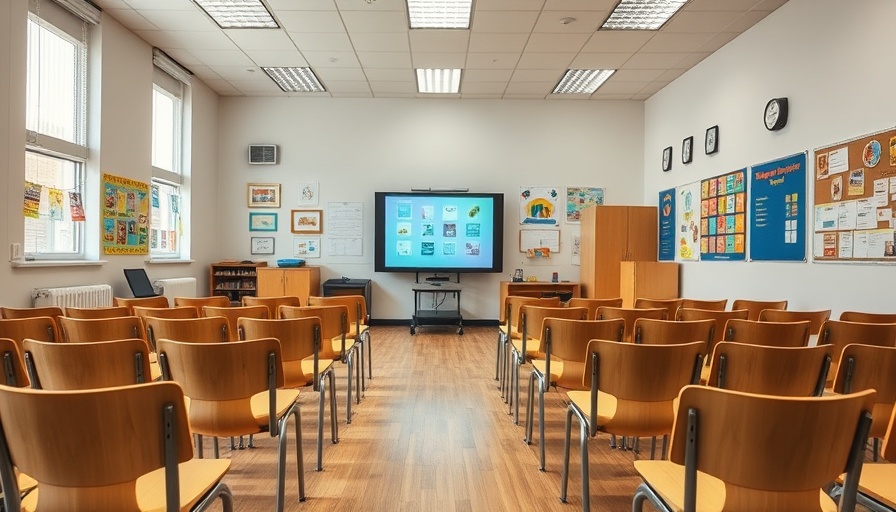
Integrating AI Into Education: A Bold New Initiative
The landscape of education in the United States is on the verge of a significant transformation with the introduction of a new draft executive order aimed at integrating artificial intelligence (AI) into K-12 education. As this initiative proposes teaching foundational AI literacy and critical thinking skills to students, it poses both exciting prospects and complex challenges that merit examination.
Understanding the Push for AI Literacy
The draft order declared by the Trump administration emphasizes the need for America's youth to become not just users but creators of AI technologies. As the order states, “To ensure the United States remains a global leader in this technological revolution, we must provide our Nation’s youth with opportunities to cultivate the skills and understanding necessary to use and create the next generation of AI technology.” This initiative aims to keep U.S. students competitive in a rapidly evolving technological landscape, especially as countries like China aggressively pursue AI advancements in their own education systems.
A Global Education Race
The urgency behind this educational initiative is apparent, as the construction of a workforce skilled in AI is seen as crucial for maintaining America’s competitive edge. China's recent announcement to integrate AI applications into textbooks and curricula creates pressure on the U.S. education system to respond effectively. In this global race for technological supremacy, the stakes are high, and education is the frontline.
The Proposed Changes and Their Challenges
The draft order outlines comprehensive steps for prioritizing AI education, including public-private partnerships to enhance resources and training for educators. However, amidst the ambitious plans lies an irony: integrating critical thinking skills into an AI-driven curriculum raises questions about potential conflict. A study from Microsoft and Carnegie Mellon University found that trusting AI tools often diminishes critical thinking—a contradiction that educators must navigate carefully in this new landscape.
Potential Risks of Relying on AI
As educators receive training on utilizing AI in classrooms, the reliance on these technologies must be scrutinized. New programmers, for example, are often reported to accept AI-generated solutions without true understanding, which may lead to gaps in fundamental skills necessary for problem-solving. This can hinder innovation rather than promote it. Establishing a strong foundation in critical thinking alongside AI literacy is essential to mitigate this risk.
What This Means for Students and Educators
The implications for students and educators are vast. In preparing K-12 students for a future where AI plays a central role, educators face the responsibility to instill both the skills to implement AI and the ability to critically evaluate its information. This delicate balance may eventually dictate how effectively students navigate an increasingly automated society.
Actionable Steps Forward
To move forward successfully, it’s crucial for educators and policymakers to develop robust strategies that combine AI literacy with an emphasis on critical thinking. Professional development programs should emphasize analytical skills, encouraging students to question and critique AI outputs actively. Furthermore, expanding curriculum resources to incorporate diverse teaching methods will also be instrumental in ensuring a comprehensive education.
Conclusion: The Future of AI in Education
The draft executive order for integrating AI into K-12 education represents a pivotal moment for the U.S. education system as it aligns with broader technological trends worldwide. While the initiative offers promising opportunities for enhancing student skills in the digital age, it also brings forth important challenges that require thoughtful implementation. As educators, policymakers, and communities engage with these changes, prioritizing a balanced approach will be vital to harnessing the benefits of AI while simultaneously fostering critical thinking among students.
 Add Row
Add Row  Add
Add 




 Add Row
Add Row  Add
Add 

Write A Comment